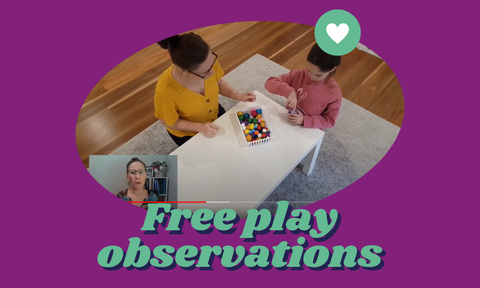
Baby and toddler motor development - eye and head movement
Share
Your baby's brain is growing at an astronomical speed and today I want to chat all about baby's eye and head movement.
We rely on our vision skills to be able to:
- See objects in our environment
- Balance across different floor surfaces without tripping over
- Pick up and play with objects
- Read written text
- Climb along play equipment
- Throw and catch a ball with our family and peers
Our visual skills are more complex than just being able to clearly see an optometrist's eye chart.
We also need to make sure our eyes and visual system are:
- working as a team - with the left and right eyes working smoothly together
- perceiving the depth and distance of objects correctly (so we don't bump into furniture)
- seeing a book clearly without the words moving, floating, or waving across the page
- adapting our balance to changes in lighting, shadows, floor surfaces without tripping over
The good news is that babies are practicing their eye movements inside the womb, before they're born.
Specialised medical scans have been able to show that babies are already forming the brain pathways that they need for vision while inside the womb, showing us that a baby's motor development begins before they take their first breath.
How amazing is that!
In the first few days of life (if the baby is born full term), the baby will turn their eyes and head towards a bright window, close their eyes to avoid a sudden bright light, and respond with their eyes to moving objects up close to them.
Their vision isn't yet clear as a newborn, only able to focus on an object 30cm away from their face (the length from their face to their caregiver during a feed). However, this focus quickly improves in the coming weeks.
By 6 to 8 weeks babies can track with their eyes from side to side, following slow objects that are up close.
By the age of 6 months babies are very eager to visually track and gaze at a range of different objects.
Our role is to make their environment visually interesting, not only providing objects that are fixed on the wall, or placed on top of their pram, but also providing visual information that slowly moves from side to side and up and down.
It's also important to advance a baby's visual skills by adding in soft ball and balancing activities, so that toddlers and preschoolers can learn about the depth and distance of objects.
For more visual tracking information check out my podcast episode here
